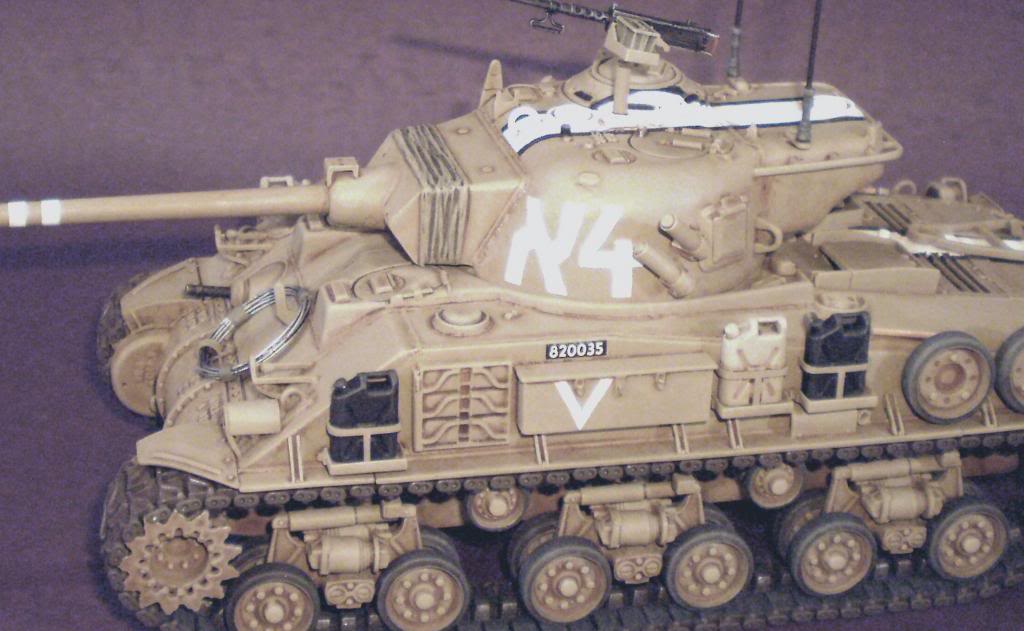How you finish your armor models is a matter of personal taste. Myself, I avoid advanced painting techniques like the plague (but then, I'm just a hobbyist who doesn't enter competitions). After thirty years of building armor models, I still stick to a very basic method.
(1.) Pin wash. Use a small, pointed brush and just touch the tip to inside corners and raised details, letting the wash flow along and around by itself. On an olive color base coat, I use a 50/50 mix of black and burnt umber artist oils, thinned to a wash with Winsor & Newton Sensodor - a very weak solvent that makes the wash faster drying (get thee to an arts and crafts store) so you can flip the different sides of the model up without having to wait too long. Because you've used a mix of different paints for your base coat, first give your model a light, overall spray of Testor's Dullcoat (clear flat laquer). This will protect the base paints from the solvent-based wash.
(2.) Drybrush. Use a Filbert style brush - a flat brush with a semicircular tip. I use an oil-based paint (like Model Master) that matches (or is close to) my base color, and lighten it with white (or other light color) artist oil rather than hobby paint (because artist oil prevents the mix from drying on the brush). Remove as much paint from your brush as you can by vigorously rubbing it on a piece of cloth or paper, and then lightly brush all the edges and raised details on your model. Go easy and don't overdo it (avoid a heavy application). If you want to, you can use this same mix and a detail brush to highlight tiny things like bolts and rivets.
(3.) Decals. I apply a little Future acrylic floor polish to the spots where I'm going to apply decals (the clear decal film will end up looking fogged if applied directly on flat paint). Be sure to use a decal solvent.
(4.) Weathering. Unless you're making a diorama or displaying your model on a landscaped base, I don't see the point of fully weathering a model. But this is 100% a matter of personal taste. I usually limit my weathering to minor things like exhaust stains, a rust wash on tracks, and replicating bare metal on tread teeth and sprockets.
(5.) Finish with a light, overall spray of Testors Dullcote. A heavy application will dry with a sheen. Multiple applications will dry with more and more sheen. This is because repeated coats fill in all the pores of your flat finish - the very thing that makes a finish look flat. Remember that some armor, especially modern subjects, have a semi-gloss finish (so multiple coats of Dullcote might be just the thing).
There are other techniques you can use (dot filters, pre-shading, post-shading, color modulation), and you might want try them to see what you enjoy. But I think my very basic method is a good way to start, even if it doesn't end up being your favorite method. Here's a finished example (in this case, because desert sand was the base color, my pin wash was four parts burnt umber and one part black):

"A little more persistence, a little more effort, and what seemed hopeless failure may turn to glorious success" - Elbert Hubbard
"Perfect is the enemy of good" - attributed to Voltaire